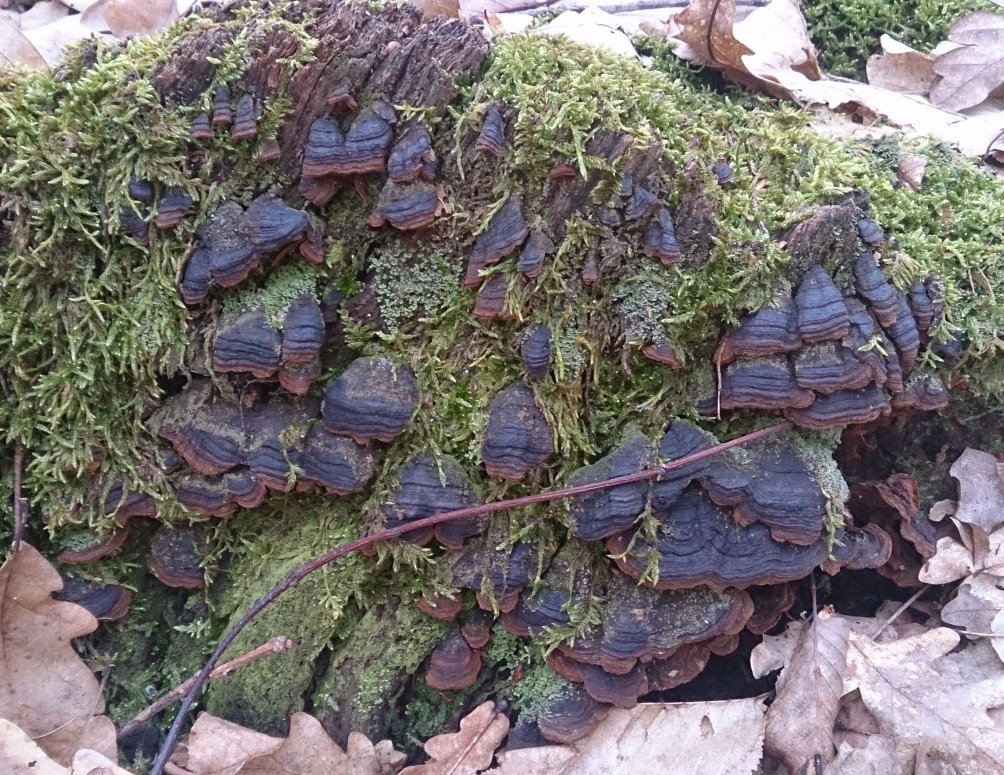Hymenochaete red-brown (Hymenochaete rubiginosa)
- Division: Basidiomycota (Basidiomycetes)
- Subdivision: Agaricomycotina (Agaricomycetes)
- Class: Agaricomycetes (Agaricomycetes)
- Subclass: Incertae sedis (of uncertain position)
- Order: Hymenochaetales (Hymenochetes)
- Family: Hymenochaetaceae (Hymenochetes)
- Genus: Hymenochaete (Hymenochet)
- Type: Hymenochaete rubiginosa (Red-brown hymenochete)
:
- Hymenochete red-rusty
- Auricularia ferruginea
- Rusty Helvella
- Hymenochaete ferruginea
- Steer rust
- Rusty stereus
- Thelephora ferruginea
- Thelephora rustiginosa

fruit bodies hymenochetes red-brown annual, thin, hard (leather-woody). On vertical substrates (lateral surface of stumps) it forms irregularly shaped shells or drooping fans with a wavy uneven edge, 2-4 cm in diameter. On horizontal substrates (lower surface of dead trunks) fruiting bodies can be completely resupinate (outstretched). In addition, the whole range of transitional forms is presented.
The upper surface is reddish-brown, concentrically zonal, furrowed, velvety to the touch, becoming glabrous with age. The edge is lighter. The lower surface (hymenophore) is smooth or tuberculate, orange-brown when young, becoming actively dark red-brown with a lilac or grayish tint with age. The actively growing edge is lighter.
the cloth hard, grayish-brown, without pronounced taste and smell.
spore print white.
Споры ellipsoid, smooth, non-amyloid, 4-7 x 2-3.5 µm.
Club-shaped basidia, 20-25 x 3.5-5 µm. Hyphae are brown, without clamps; skeletal and generative hyphae are almost the same.
A widespread species, in the temperate zone of the Northern Hemisphere, confined exclusively to oak. Saprotroph, grows exclusively on dead wood (stumps, dead wood), preferring places of damage or with fallen off bark. The period of active growth is the first half of summer, sporulation is the second half of summer and autumn. In mild climates, growth continues throughout the year. Causes dry corrosive rot of wood.
The mushroom is very tough, so there is no need to talk about eating it.
The tobacco hymenochaete (Hymenochaete tabacina) is colored in lighter and yellowish shades, and its tissue is softer, leathery, but not woody.









